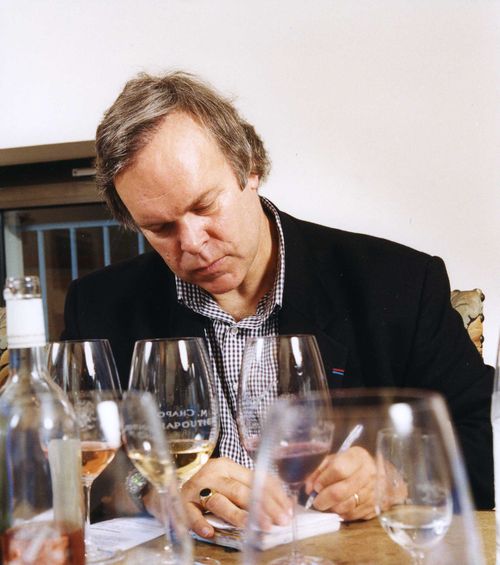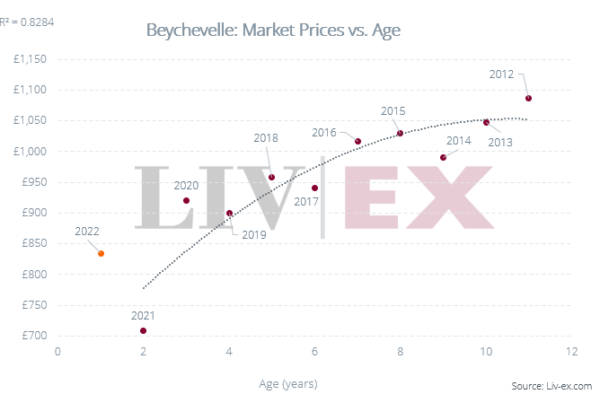On Friday we published the first part of our recent interview with Robert Parker. The second part of the interview is shown below. Parker talks about the regions and producers that he is excited about, who may take over the Bordeaux beat when he eventually leaves The Wine Advocate, and his views on the Pancho Campo MW affair.
Is there one vintage you feel that you, or others, underrated? If you were buying a back vintage, where should collectors put their money? Where is the value?
I think there is tremendous sentiment about 2005, which many writers rated slightly better than I did. I was originally worried about the tannin levels in 2005, but the wines are so concentrated I think they will be just fine – they just need a lot of time.
But there are two vintages I would pick:
Firstly, 2003. It was a bizarre year; there were a lot of failures in Pomerol, St Emilion and the Graves, but when you get into the Medoc you really run into a lot of profound wines, particularly further north in Pauillac, St Estephe and St Julien. I bought a lot of Montrose; I bought Cos; I bought the Leovilles, the Pichons, Latour and Lafite. These are great wines, despite the question marks over the vintage. If you had late-ripening Cabernet Sauvignon and moisture-retentive clay soils you could survive the extreme heat of July and August and benefit from the late August rains. If you look at the dates of the harvest for Latour and Lafite, it was pretty much a normal harvest. The statement that the wines are all overblown does not apply at all to the top wines of the vintage. You do have to be very careful though; the percentage of world-class red wines made in France in 2003 was very small. If you don’t have the right information, you can get burnt badly.
The other vintage I would mention, which I think I underrated, was 2001. It’s a vintage that is just drinking beautifully and if I were a wine consultant I would advise my clients to buy them. 2000 is obviously a greater vintage overall, but the wines are still tannic, vibrant and very young. The 2001s, though, are very close in quality to the 2000s, particularly on the Graves and the Right Bank. And the wines have evolved at a much faster pace – they are very fragrant, very perfumed. They are not blockbusters but they are rich. They are also very reasonably priced and somewhat forgotten.
Which vertical are you working on now?
I am currently tasting the 1995 and 1996 Bordeaux back vintages. The 1996s are living up to my hopes and the 1995s are still a little stern and austere. We will all be pushing up daisies before they are ready.
If you could pick one producer that has impressed you in recent years, who would it be?
There are so many. I think, as an appellation, what has happened in Margaux has been remarkable. Palmer and Chateau Margaux have always made great wines, but producers such as d’Issan, Brane Cantenac, Giscours and du Tertre have all improved so dramatically. When I started it was always one of the most disappointing of the appellations in Bordeaux, but now it’s one of the most exciting. Perhaps Brane Cantenac or Malescot St Exupery would jump out at me as just doing the most fantastic work.
But if I could only pick one wine, then what Alfred Tesseron has done at Pontet Canet really stands out. He took a fabulous terroir, right on the plateau next to Mouton, and has just done everything possible to make First Growth quality wine, which he has been doing. He’s also done a number of contrarian things, like moving to organic and then biodynamic farming, which was unheard of in Bordeaux.
He’s got a lot of company, though. The visionary Bernard Magret’s wines have jumped in quality significantly. Pape Clement in the mid-70s was undrinkable and now it is one of the great estates.
Which of the Firsts do you think is doing the best job?
I have a weakness for Latour and Lafite. Latour always has an ethereal complexity and Lafite always has this power and majesty, but they are all on top of their game now. It seems to me that Mouton traditionally trailed them but is now right up there. Margaux is great, more floral and elegant. And then you go south to Haut Brion – one of the most singular wines in Bordeaux. Jean-Philippe Delmas is just doing a fabulous job and he had some big boots to fill [his father’s Jean Delmas]. Whoever did the 1855 classification knew a lot more than they are given credit for.
And what’s exciting you outside of Bordeaux?
One of the most exciting areas for wine in the world is Argentina. The Malbecs coming out of Argentina are thrilling – and at all price levels. Certainly in the US, we can find $15-18 Malbecs that are delicious, ready to drink and consumers love them. And if you want to go up the ladder you can buy a top Catena wine at $75 that competes with any other similarly priced wine in the world. I am also starting to get excited about what Chile is doing with Sauvignon Blanc, Chardonnay and Pinot Noir.
I still think that Spain is very much the sleeping giant of the Mediterranean. It has just unlimited potential. Although they are obviously going through a bad patch with their economy and some of the other problems they have had, such as the scandal involving my former colleague, Jay Miller, and Pancho Campo.
Talking about The Wine Advocate then, you have obviously expanded the number of tasters, which has had both good and bad outcomes. How is your role going to change in the next few years, and what’s your plan for the team?
I haven’t really slowed down. I still love to travel and enjoy the chase – I’m like a truffle dog trying to find truffles. I love doing Bordeaux – I always have – and the Rhone is a sentimental favourite. But I’m doing more verticals and older horizontals and more miscellaneous tasting with some of the best importers to try and find where their best values are. That gives me a chance to taste from the Loire, Alsace, wherever.
My role has evolved though. I have to hire and manage people and I’m learning good things and bad things. I’m very proud of the people that we have, but I am still learning the supervisory and communication aspects. You always need to communicate exactly what you want. This is a challenge for me – I take part of the blame for what happened with Pancho Campo and Jay Miller in Spain. We haven’t seen the final investigative report from our lawyers, but at the end of the day, I feel that I did not supervise Jay Miller as effectively as I should have. I should have been more hands-on and more diligent in asking questions as to what he was doing. Nothing was done that was illegal, but there were some things done that were just… I suppose perception is reality. I should have scrutinised the way he did things a lot more than I did.
Who do you think will replace you as the top Bordeaux critic at The Advocate?
I don’t think you have to worry for at least five years! I obviously have the young Englishman Neal Martin on my team. He is very talented and he gets better every year. But I want him to keep on doing what he is doing – I don’t want to just promise him the job. When that day comes, if it is five years from now or longer, I will probably just open the competition. Neal will probably have an advantage as part of the inside circle, and he is only going to get better – and he just loves wine! This is very important to me.
I remember that Marvin Shanken, the publisher of the Wine Spectator, was asked what he looks for in a wine writer. He said: “I don’t want wine writers. I just want good writers and we can teach them all they need to know about wine.” My philosophy is the opposite. I want wine lovers, first and foremost, and we can teach them about writing. If you look at people like Neal, Antonio Galloni or Lisa Perrotti-Brown, their interest, passion and curiosity about wine is just 24/7. Those are the kind of people that I want. When my wife accuses me of dreaming about wine, I don’t take it as an insult.
Regarding the release of the Bordeaux Report, there is always some disgruntlement about timings, with some print customers getting it earlier than online. How do you make it fair?
That is the awkward question. We try and make it as fair as possible, so the greatest number of people get The Wine Advocate at the same time. What happened with the last issue was that it was mailed from the local post office and people who got it that morning, five or six hours before the electronic subscribers, faxed and emailed the entire contents around. So we are going to move the electronic release up to 12 noon [from 6pm currently] which should kill that problem. Within the next six months we will also have a pdf capacity. We are going to put out some serious incentives to the print subscribers to go over to electronic and ultimately perhaps kill the whole print edition. Three-quarters of our subscribers are on the internet version now, and the print subscriptions keep going down. But we still have the older generation of subscribers who prefer print, and I think we can probably satisfy their needs with a pdf.





